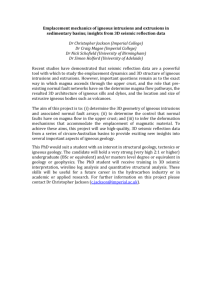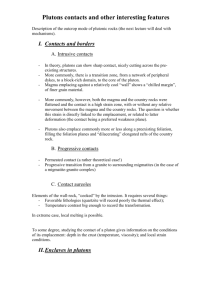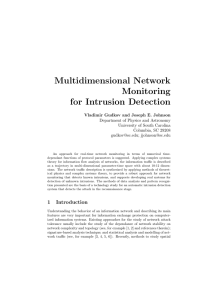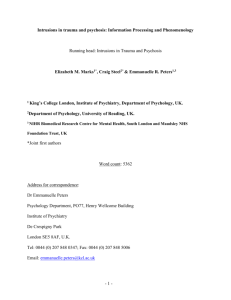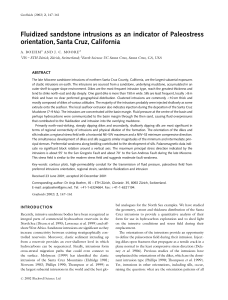Petrogenesis of mafic-ultramafic intrusions in the Giles Complex, WA
advertisement
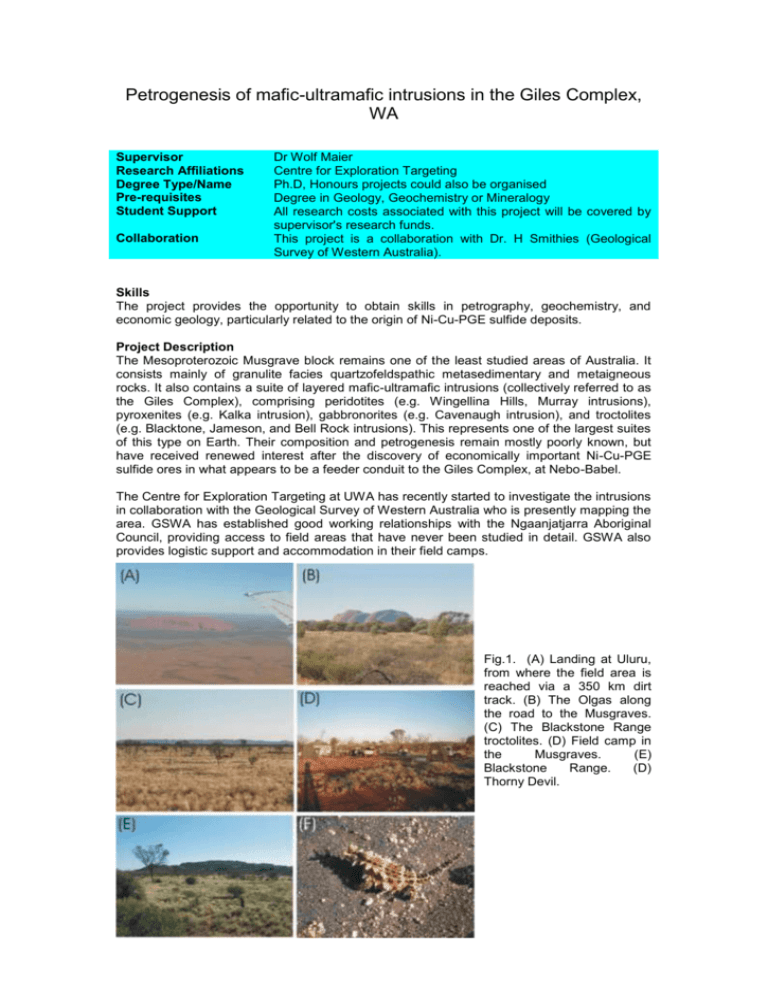
Petrogenesis of mafic-ultramafic intrusions in the Giles Complex, WA Supervisor Research Affiliations Degree Type/Name Pre-requisites Student Support Collaboration Dr Wolf Maier Centre for Exploration Targeting Ph.D, Honours projects could also be organised Degree in Geology, Geochemistry or Mineralogy All research costs associated with this project will be covered by supervisor's research funds. This project is a collaboration with Dr. H Smithies (Geological Survey of Western Australia). Skills The project provides the opportunity to obtain skills in petrography, geochemistry, and economic geology, particularly related to the origin of Ni-Cu-PGE sulfide deposits. Project Description The Mesoproterozoic Musgrave block remains one of the least studied areas of Australia. It consists mainly of granulite facies quartzofeldspathic metasedimentary and metaigneous rocks. It also contains a suite of layered mafic-ultramafic intrusions (collectively referred to as the Giles Complex), comprising peridotites (e.g. Wingellina Hills, Murray intrusions), pyroxenites (e.g. Kalka intrusion), gabbronorites (e.g. Cavenaugh intrusion), and troctolites (e.g. Blacktone, Jameson, and Bell Rock intrusions). This represents one of the largest suites of this type on Earth. Their composition and petrogenesis remain mostly poorly known, but have received renewed interest after the discovery of economically important Ni-Cu-PGE sulfide ores in what appears to be a feeder conduit to the Giles Complex, at Nebo-Babel. The Centre for Exploration Targeting at UWA has recently started to investigate the intrusions in collaboration with the Geological Survey of Western Australia who is presently mapping the area. GSWA has established good working relationships with the Ngaanjatjarra Aboriginal Council, providing access to field areas that have never been studied in detail. GSWA also provides logistic support and accommodation in their field camps. Fig.1. (A) Landing at Uluru, from where the field area is reached via a 350 km dirt track. (B) The Olgas along the road to the Musgraves. (C) The Blackstone Range troctolites. (D) Field camp in the Musgraves. (E) Blackstone Range. (D) Thorny Devil. The present project involves mapping in the Murray, Blackstone and Cavenaugh Ranges (in July-August 2007) and the Jameson Range (in 2008), and analytical work (comprising petrographical examination of thin sections, lithophile and chalcophile element analysis, microprobe analysis of minerals, and isotopic work including SHRIMP dating and Oxygen and Sm-Nd isotope analysis. The analytical costs and travel expenses are fully covered. The aim of the project is to constrain the petrogenesis of the intrusions, and to evaluate its potential for hosting PGE and Ni deposits. Recommended Reading Glikson, A. (1995) The Giles mafic-ultramafic complex and environs, western Musgrave Block, central Australia. AGSO Journal of Australian Geology and Geophysics, Vol. 16 (1-2).


